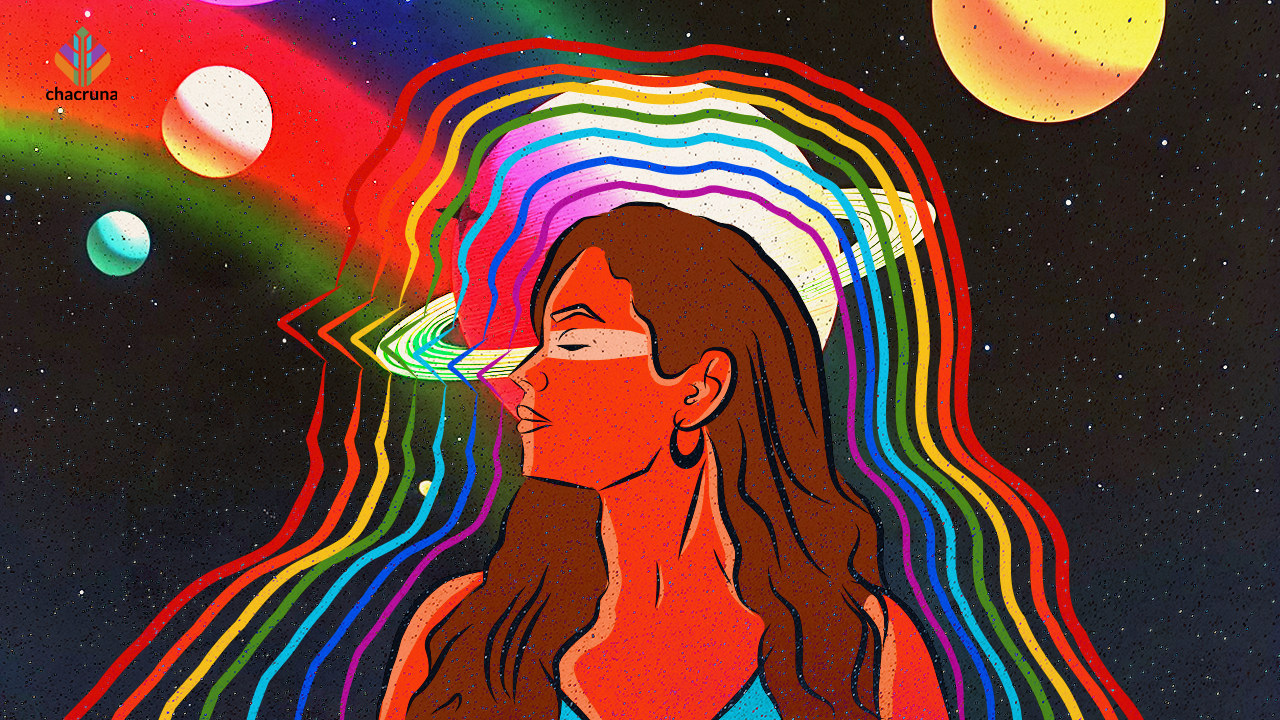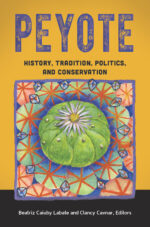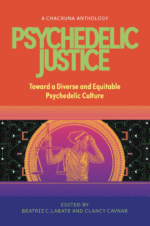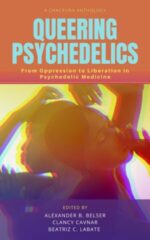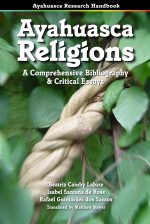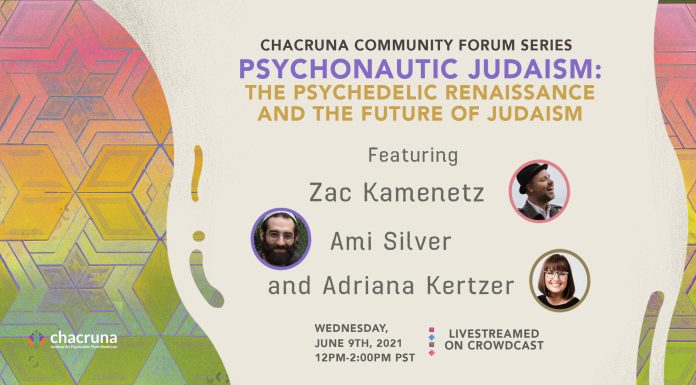- The Queer Potential of Psychedelics: Assessing Queer Representation in the Academic Literature of Psychedelic Studies - May 21, 2025
- Old Guard, New Tricks: Reflections on Queering the Psychedelic Space with Annie and Michael Mithoefer - January 17, 2022
- The Cost of Omission: Dr. Valentina Wasson and Getting Our Stories Right - November 11, 2020
The broad, evolving, anti-oppressive conversation around identity parallels the renewed interest in the impact of psychedelics on mental health, spiritual exploration, and human flourishing. Sexuality, gender identity and queerness1 play a pivotal role in shaping the framework of individual identity (Hall et al., 2021). Though the field continues to affirm the therapeutic potential of psychedelics, the relationship between queer identity and psychedelic use has not been thoroughly explored by mainstream researchers, historically, or in the present day.
As the field of psychedelic studies continues to develop and examine psychedelic treatments for a range of mental health issues (Yao et al., 2024) as well as delve holistically into the spiritual, religious and cultural relevance of psychedelics to the human experience, it is imperative to establish an inclusive orientation to the study of psychedelics that meaningfully integrates individual gender and sexual identity into our understanding of psychedelic experiencing. The current trend towards the medicalization of psychedelic use has resulted in a limited discussion around the contributions of spiritual and personal use among queer people in support of the humanistic purposes of development of self-identity and promotion of self-acceptance (Amada et al., 2020). While these conversations are occurring in selected spaces (Besler et al., 2022), there has to date been no review of the literature on psychedelic use and queer lived experience. Furthermore, while considerations of gender and sexual identity have been included in psychedelic research, they tend to problematize psychedelic use among queer people rather than exploring the unique therapeutic potential these therapies may hold for queer populations.
The current trend towards the medicalization of psychedelic use has resulted in a limited discussion around the contributions of spiritual and personal use among queer people in support of the humanistic purposes of development of self-identity and promotion of self-acceptance.
In response, we contend that queerness itself is creativity embodied; to be queer is creativity in action. It requires incredible ingenuity to move from surviving to thriving in the face of heterosexist norms, much like how it demands tenacity to co-create and curate queer spaces that legitimize, support and celebrate our existence. We believe that by reclaiming, redefining, and reimagining meaningful relationships between psychedelic experiences and queer life and identity, research and clinical practices benefit from the potential to move in a more inclusive direction, centering queer experiences as an essential component of psychedelic research and practice.
And so, the primary aim of our recently published scoping review (Bartlett et al., 2024) was to better understand the current and historical treatment of the intersection of psychedelics and queerness in academic literature. Until fairly recently the narratives of both psychedelic use and queer identity have been controversial, if not stigmatized entirely. From LSD being used in conversion therapy (Ens, 2018) to the stigmatization and pathologization of MDMA use amongst gay men in the 1980s-2000s (Klitzman, 2006; Purcell et al., 2005), the intersection of queerness and psychedelics has had a complicated history. This historical context is further muddied by the limited research and publication from a queer lens on psychedelic use within the queer community.
We contend that psychedelics are inherently queer.
And yet, we contend that psychedelics are inherently queer. Psychedelic use has been interwoven in Indigenous societies with fluid conceptions of gender and sexuality (Stephen, 2002). Psychedelics have been shown to release rigid patterns, make new connections, invert expectations, and challenge societal norms (Hipólito et al., 2023). From found family and community in queer spaces to the therapeutic care of long-neglected parts of oneself, psychedelics have the potential to promote queer healing and acceptance. The Pride flag, now recognized across the world as a symbol of community, was conceived of during an acid trip in the era when queer people found community and catharsis on the dance floor using MDMA and LSD (Baker, 2019, p. 61). Even the fungal kingdom from which psilocybin is derived is queer, with one species of fungi having more than 23,000 distinct sexual identities (McLaughlin et al., 2023). As mycologist Merlin Sheldrake (Sheldrake, 2021, pp. 90-91) observes, this helps scientists think beyond the binary, mirroring queer theory and reflecting the world in its crystalline multiplicity (pp 90-91).
Why are queer stories important for the psychedelic community and psychedelic research?
First, there is an urgency to understanding and addressing queer pain and marginalization. The journey of self discovery should be a joyful revelation, but despite growing numbers of people “coming out” in Western culture, being queer is still often met with violent opposition in most parts of the world. Even in North America, most suicide attempts of queer individuals occur within the first five years of realizing one’s sexual identity, irrespective of age; in North America we see queer teens attempt suicide at a rate more than twice that of their straight peers. We have just to look to the recent claw back on trans rights happening around the US to see how vehement the opposition to queerness can get, and how quickly hard-fought equity gains can be reversed. And so, systemic discrimination has dire consequences for all marginalized groups, including queer folks. And at the same time, marginalized folks are often those most in need of healing, community and support. But these are also the groups being omitted from the psychedelic research space. Like other marginalized groups, the queer experience is often a painful one, and our work to understand the therapeutic potential of psychedelics needs to better understand the pain suffered by those outside of the majority.
Second, exploring one’s identity and deepening one’s understanding of self is fundamental to psychedelic experiencing, and also to being queer. One of the greatest strengths of queer culture and community is the variety of ways that people can identify and express their authentic selves. This grappling with, and openness to, a wide range of self-understanding outside the “or” of the binary, also highlights the “and-ness” of the queer experience. For being queer is inherently a creative act. For ultimately, being queer is not just about pronouns or who a person has sex with. Being queer involves intentionally grappling with questions of how we love each other and love ourselves. As queer folks, we can’t rely on what society has told us about love and identity, so we have to actively ask ourselves: Who am I? Who, how and why do I love myself and others? There are few questions more fundamental to the human experience than these.
Third, while much research is being conducted on the therapeutic use of psychedelics in medicalized settings, there is a small growing conversation around the importance of community and peer supports in psychedelic experiencing—a priority that queer folks have known about for a long time. Communal experiences such as “found-family” and safe spaces such as queer clubs, bars, or rave scenes that outwardly signal a permissiveness for queer joy and expression have long been shown to facilitate healing from queer stress and trauma, whether participants are in a chemically altered state or not. While there is a need to better understand the therapeutic use of psychedelics to combat queer trauma, there is wisdom within the queer experience to help inform a more comprehensive understanding of the potential of a range of therapeutic psychedelic sets and settings, which can be of benefit to a wide variety of marginalized groups and lived experience.
Thus, part of the approach taken in our scoping review sought to challenge heteronormative approaches to research. This work included questioning dominant research methods and ideological frameworks, both historically and in modern research. With this approach in mind, the review aimed to emphasize the concept of non-pathologizing, psychedelic use within the queer community. Our specific research questions included: (1) What aspects of queer psychedelic experiences (e.g., types of psychedelics, settings of use) tend to be captured? (2) Who is being studied? (3) Why do queer people use psychedelics? (4) What are the impacts of queer psychedelic use? and (5) What trends and gaps exist in the discourse on queer psychedelic use? Of 31,085 publications screened, we identified 18 articles for review.
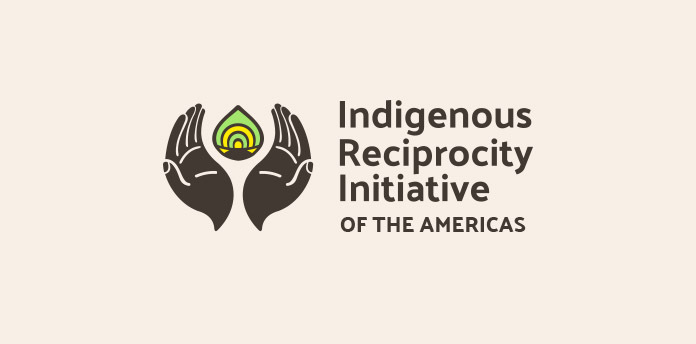
Discover the Indigenous Reciprocity Initiative of the Americas
What did we find?
In the scoping review, we explore several themes, including:
- Who is being studied: A defining strength of the queer community is the diverse, ever-evolving, and ever-expanding possibilities of self-identity with which one can align and express. Unfortunately, this heterogeneity and richness is not reflected in the psychedelic literature. Gender-wise, the lived experiences of gay cisgender men dominate the narrative of the included resources. The issues faced by lensing the research along the gender binary is also reflected in the lack of diversity represented along the spectrum of sexual orientation.
- The need for intersectionality: We found there is a distinct lack of consideration paid to other intersectional and minoritized identities of queer participants in the academic literature. When it comes to race, for example, ten studies provide no racial breakdown or assume “white” as the default, while six studies only provide some basic information on the racial breakdown of participants. By incorporating intersectionality into queer research, scholars and clinicians can better understand the diverse experiences within the queer community. This helps to recognize and address the specific needs, challenges, and inequalities faced by individuals who exist at the intersections of multiple marginalized identities.
- Varied settings of use: A noteworthy emergent observation was that settings of psychedelic use may unpredictably reflect or predict outcomes of use. For example, queer individuals may derive immense pleasure from recreational group psychedelic experiences as such experiences in a communal setting have the potential to catalyze healing for queer stress and trauma. Likewise, individual psychedelic use in therapeutic, controlled settings may also be a source of objectively hedonistic experiences. This highlights the reality and power of queer spaces to shape queer experiences, which may be amplified with psychedelic use.
- Outcomes and impacts of queer psychedelic use: Via the screened in literature, we discuss the therapeutic potential of psilocybin-assisted trauma therapy, with particular attention given to the potential value of group-based interventions, as well as the use of psychedelics to combat minority stress and a deepening of religious or spiritual attitudes amongst queer folks who may or may not have experienced religious trauma.
- Queer identity development: We also analyze the screened in studies to explore the impact of psychedelic use on the development of one’s queer identity. for example, one study highlighted the self-reflection and self-acceptance accessible in psychedelic experiencing for queer individuals. The bits and pieces that make up one’s identity were always present, but by finally putting them together through a psychedelic experience and/or the integration of that experience, one’s view of oneself is shifted.
All of this said, we would like to note that “grey literature,” or research and analysis produced outside of academia, was omitted from our scoping review primarily due to the restrictions of the academic search databases used. However, grey literature makes up the majority of publications on the intersections of psychedelics and queerness. As we discuss, it is clear from the number of publications we mention in the discussion on grey literature in our paper that research on psychedelics and queerness outside academic institutions is outpacing research taking place within them. This may indicate a relative lack of interest in or funding for queer psychedelic research projects within scholarly institutions, or it may be a byproduct of queer-theorists taking a deliberately emic approach to queer research where queer communities can tell their own stories, unhampered by the patriarchal and colonial notions of scientific legitimacy that dictate what scholarship is or is not publishable within Western academia.
Our article closes with several recommendations calling for an increase in academic engagement with queer researchers and queer-focused academic research. We also call for greater diversity in the research being done, and more research specifically informed by the unique lived experience of queer people. Because the inclusion of queer lived experience in psychedelic research is not just of benefit to the queer community (which has so often been marginalized in the psychedelic research space). By deepening our understanding of the queer experience and some of its unique features, we can also benefit and help deepen our understanding of the broader human-psychedelic experience—specifically, as discussed in the paper, the potential of leveraging the experiences of queer folks to better understand identity formation, as well as the potential therapeutic role of community in psychedelic experiencing.
Research has shown that psychedelics have the potential to enhance meaning and creativity, providing new insight and experience that can be personally, psychologically, and spiritually significant for many different people. We contend that this significance may be especially true for queer individuals.
Research has shown that psychedelics have the potential to enhance meaning and creativity, providing new insight and experience that can be personally, psychologically, and spiritually significant for many different people. We contend that this significance may be especially true for queer individuals. As shown in our scoping review, however, this significance remains underexplored in peer-reviewed academic research. It is clear that there is a strong need for broader and more inclusive research investigating the intersections of queerness and psychedelic experiences, and we look forward to being part of the collective effort to continue queering psychedelics.
Art by Mulinga.
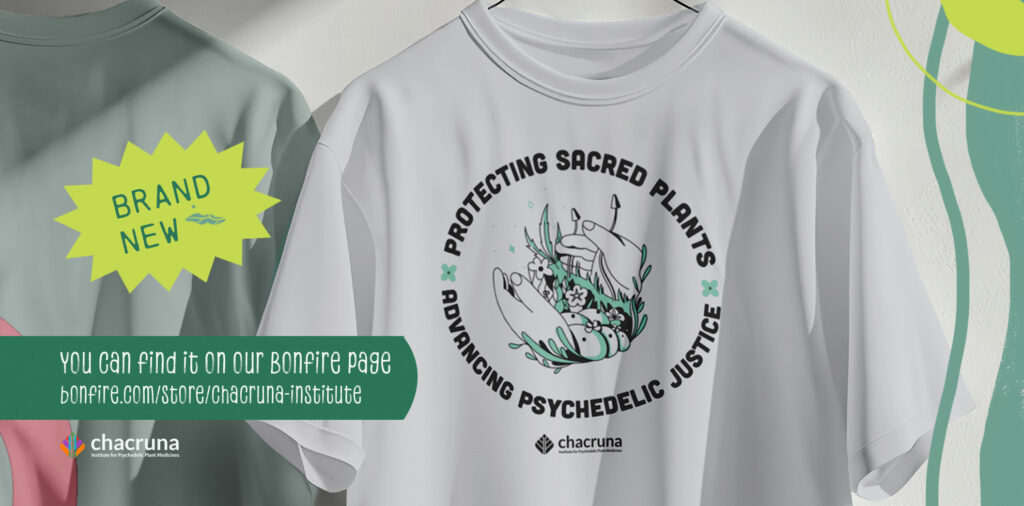
Shop Our Latest T-Shirt Design, “Protecting Sacred Plants.”
Notes
1 In this article and in our scoping review, we use the reclaimed term “queer” as an inclusive umbrella label to encompass a wide range of identities, including lesbian, gay, bisexual, transgender, intersex, asexual, two-spirit, and others (LGBTQIA2S+). We recognize that language is complex and that the term ‘queer’ may not resonate with everyone. However, we have chosen to use this term for its potential to foster both inclusivity and efficiency in our discussions. Our aim is to honor the diverse range of choice and experience within the community and by choosing a term that is meant to be inclusive, the term is also meant to acknowledge that identities are subjective, fluid and evolving.
References
Amada, N., Lea, T., Letheby, C., & Shane, J. (2020). Psychedelic experience and the narrative self: An exploratory qualitative study. Journal of Consciousness Studies, 27(9-10), 6–33.
Baker, G. (2019). Rainbow warrior: My life in color. Chicago Review Press.
Bartlett, A., Christ, C., Martins, B., Saxberg, K., & Ching, T. H. W. (2024). The library is open: A scoping review on queer representation in psychedelic research. Frontiers in Public Health, 12(1472559). https://doi.org/10.3389/fpubh.2024.1472559
Belser, A., Cavnar, C., Labate, B.C. (Eds.). (2022). Queering psychedelics: From oppression to liberation in psychedelic medicine. Synergetic Press.
Ens, A. (2018). “Wish I would be normal”: LSD and homosexuality at Hollywood Hospital, 1955–1973 (Doctoral dissertation, University of Saskatchewan).
Hall, W. J., Dawes, H. C., Plocek, N. (2021). Sexual orientation identity development milestones among lesbian, gay, bisexual, and queer people: A systematic review and meta-analysis. Frontiers in Psychology, 12(753954). https://doi.org/10.3389/fpsyg.2021.753954
Hipólito, I., Mago, J., Rosas, F. E., Carhart-Harris, R. (2023). Pattern breaking: A complex systems approach to psychedelic medicine. Neuroscience of Consciousness 2023(1). https://doi.org/10.1093/nc/niad017
Klitzman, R. (2006). From “Male Bonding Rituals” to “Suicide Tuesday”: A qualitative study of issues faced by gay male ecstasy (MDMA) users. Journal of homosexuality, 51(3), 7–32. https://doi.org/10.1300/J082v51n03_02
McLaughlin, J. F., Brock, K. M., Gates, I., Pethkar, A., Piattoni, M., Rossi, A., & Lipshutz, S. E. (2023). Multivariate models of animal sex: Breaking binaries leads to a better understanding of ecology and evolution. Integrative and Comparative Biology, 63(4), 891–906. https://doi.org/10.1093/icb/icad027
Purcell, D. W., Moss, S., Remien, R. H., Woods, W. J., & Parsons, J. T. (2005). Illicit substance use, sexual risk, and HIV-positive gay and bisexual men: Differences by serostatus of casual partners. AIDS, 1(S37–S47). https://doi.org/10.1097/01.aids.0000167350.00503.db
Sheldrake, M. (2021). Entangled life: How fungi make our worlds change our minds & shape our futures. Random House.
Stephen, L. (2002). Sexualities and genders in Zapotec Oaxaca. Latin American Perspectives, 29(2), 41-59. https://doi.org/10.1177/0094582X0202900203
Yao, Y., Guo, D., Lu, T. S., Liu, F. L., Huang, S. H., Diao, M. Q., Li, S. X., Zhang, X. J., Kosten, T. R., Shi, J., Bao, Y. P., Lu, L., & Han, Y. (2024). Efficacy and safety of psychedelics for the treatment of mental disorders: A systematic review and meta-analysis. Psychiatry Research, 335(115886). https://doi.org/10.1016/j.psychres.2024.115886
Take a minute to browse our stock:
Did you enjoy reading this article?
Please support Chacruna's work by donating to us. We are an independent organization and we offer free education and advocacy for psychedelic plant medicines. We are a team of dedicated volunteers!
Can you help Chacruna advance cultural understanding around these substances?


